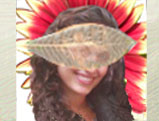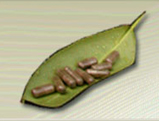 Loading... Please wait...
Loading... Please wait...The Ancient Ayurvedic Writings
Posted by Dr. Vasant Lad on 9th Dec 2009
The Great Three Caraka Samhita
Susruta Samhita
Astanga Hrdayam Samhita
The Minor Three Sarngadhara Samhita
Bhava Prakasa Samhita
Madhava Nidanam Samhita
The Caraka Samhita is believed to date two to four centuries before Christ. It is felt to be the oldest and the most important ancient authoritative writing on Ayurveda. It is not known who this person was or, if indeed, this represents the work of a “school of thought”– of scholars or followers of a man known as Caraka. This work is often considered a redaction of an even more ancient oral tradition, not an original composition of a single person, and the redactor is said to be Caraka. Drdhabala, living about 400 A.D., is believed to have filled in many verses of missing text in the cikitsasthana which arose over time.
The language of Caraka is Samskrt and its style is poetry–with meter and melody. Poetry was known to serve as a memory aid. For example, Caraka contains over 8,400 metrical verses which are regularly committed to memory, in toto, by modern medical students of Ayurveda.
It presents most of the theoretical edifice of Ayurveda and concentrates on the branch of Ayurveda called kayacikitsa. This is the theory of the internal fire–of digestion–or in modern terms internal medicine. Seen from a greater perspective this work seems to represent a certain value of Consciousness different from other works. It gives more discussion about the notion that life is fundamentally a field of Intelligence and Pure Knowledge. This field is self-aware–it is the knower as well as the object of perception. And for Caraka this is part of what is to be treated by the physician. Caraka never discusses the sub-types of pitta and kapha, but it does list and describe the 5 sub-types of vata.
The P.V. Sharma translation comes in four volumes–two of original text and two of commentary about the original work. Sharma’s English version is said to be a scholarly and relatively faithful work. It has numerous appendices and an extensive index. The B. Dash version lacks these features but does have extensive commentary incorporated in with the original text. Both translators have excellent academic credentials supporting their works.
The Susruta Samhita presents the field of Ayurvedic surgery called salakya–meaning foreign body. This branch of medicine arose in part from the exigencies of dealing with the effects of war. This work, also, is said to be a redaction of oral material passed down verbally from generation to generation. It is thought to have arisen about the same time period as the Caraka Samhita but slightly after it. Its style is both prose and poetry with poetry being the greater portion. The Susruta Samhita, while dealing with the practice and theory of surgery, is an important source of Ayurvedic aphorisms. For example, the most commonly quoted definition of health is from Susruta. This work is unique in that it discusses blood in terms of the fourth dosic principle. This work is the first to enumerate and discuss the pitta sub-dosas. With its emphasis on pitta, surgery, and blood this work best represents the transformational value of life. This work, also originally written in Samskrt, is available in English only without Devanagari or transliteration. Bhishagratna’s translation is the only English version extant.
Astanga Hrdayam is the work of a person named Vagbhata. There are two works by a person or persons with this name. The Astanga Sangraha is nearly 30% greater in size (by verse count) and is primarily poetry with prose. The Hrdayam is written in prose and seems to have a slightly different organization of material than the former. Both works have been dated about the same time and are thought to date after the Caraka and Susruta Samhitas. The exposition is relatively straight forward and also deals primarily with kayacikitsa. In this work we see the kapha sub-doses are first listed and described–completing our modern edifice of vata, pitta, kapha with their five sub-types. Its emphasis on treating the physiology of the body and suggestions for therapeutic use of metals and minerals means the perspective of the treatise represents the gross, material value of life more than its counterparts–Caraka and Susruta. Srikantha Murthy has weighty credentials and brings them to bear in this English translation.
The Sarngadhara Samhita is a concise exposition of Ayurvedic principles. Its author, Sarngadhara, has given his work as a digested version of Ayurvedic knowledge, deliberately omitting much detail because the works of The Great Three were already widely known. This treatise is thought to have originated in the 15th century A.D. The Sarngadhara Samhita is prized for its enumeration and description of numerous pharmacological formulations used in pancakarma and contains the first textual reference to diagnosis by means of the pulse. Its subject matter is again the field of kayacikitsa. This present work is available in Devanagari and English translation, by Srikantha Murthy.
Bhava Prakasa is not available in English translation. We believe it’s subject matter deals with rejuvenation, and the preparation of products and compounds.
Madhava Nidanam, available here in Devanagari and English translation by Srikantha Murthy deals with the classification of diseases in Ayurveda. Its taxonomy is slightly different at times from those given by Caraka, Susruta, and Vagbhata, while for the greater part its verses are seemingly direct quotes from them. This work is dated around 700 A.D. and is prized for covering a wide range of diseases in the fields of bala, salya, damstra, urdhvanga, kayacikitsa. While this treatise gives detailed description of disease prodroma and cardinal signs and symptoms, it does not give explanation of etiology (disease doctrines) or suggestions for cikitsa.
NOTE: This article has been written in transliteration of the original Sanskrit in strict accord with the accepted transliteration convention. Some proper names cited are notable exceptions to this rule.















